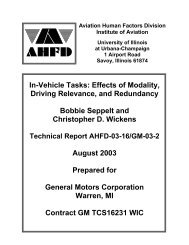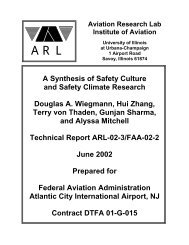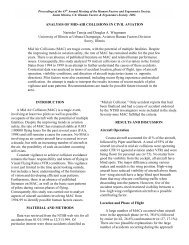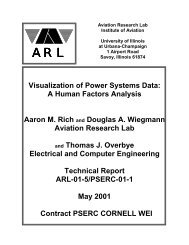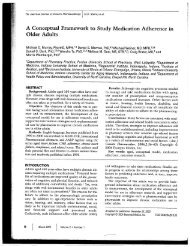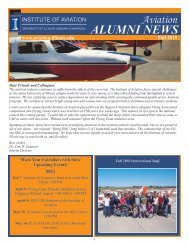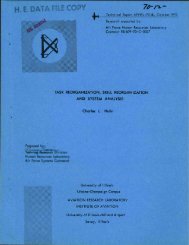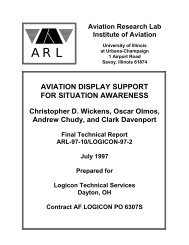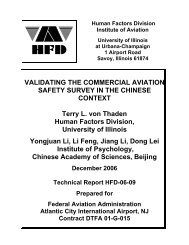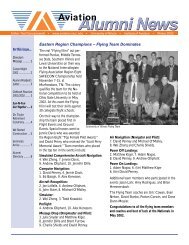Defining and Assessing Safety Culture in High Reliability Systems
Defining and Assessing Safety Culture in High Reliability Systems
Defining and Assessing Safety Culture in High Reliability Systems
Create successful ePaper yourself
Turn your PDF publications into a flip-book with our unique Google optimized e-Paper software.
Lee, T. (1998). Assessment of safety culture at a nuclear reprocess<strong>in</strong>g plant. Work & Stress,<br />
12(3), 217-237.<br />
The development <strong>and</strong> validation of a survey at the Sellafield site of British Nuclear Fuels <strong>in</strong><br />
Cumbria was described <strong>in</strong> this article. The procedure was as follows: five focus groups were held<br />
to elicit safety-relevant beliefs, attitudes <strong>and</strong> values. The first draft questionnaire was constructed<br />
based on the transcript. The draft version was adm<strong>in</strong>istered to all who had taken part <strong>and</strong> an open<br />
meet<strong>in</strong>g was held to discuss shortcom<strong>in</strong>gs <strong>and</strong> possible amendments. Adm<strong>in</strong>istration of the<br />
questionnaire to a pilot group <strong>and</strong> f<strong>in</strong>ally, the result<strong>in</strong>g 172-item questionnaire, a 7-po<strong>in</strong>t Likert<br />
scale, which covered 9 safety doma<strong>in</strong>s: procedures, risks, job satisfaction, rules, participation,<br />
tra<strong>in</strong><strong>in</strong>g, control, <strong>and</strong> plant design. Each doma<strong>in</strong> was analyzed us<strong>in</strong>g pr<strong>in</strong>cipal components<br />
analysis, 38 factors were extracted, <strong>and</strong> the 19 account<strong>in</strong>g for the most variance were selected.<br />
Factor scores were validated aga<strong>in</strong>st the reported number of lost-time accidents. Sixteen out of<br />
19 discrim<strong>in</strong>ated at high levels of significance. A generic analysis of the full questionnaire <strong>and</strong><br />
secondary factor analysis of the primary factors were also conducted, but showed no advantage.<br />
A reduced version with 81 items result<strong>in</strong>g from the with<strong>in</strong>-doma<strong>in</strong> analysis performed as well as<br />
the orig<strong>in</strong>al, with considerable improvement <strong>in</strong> validity obta<strong>in</strong>ed by us<strong>in</strong>g discrim<strong>in</strong>ant function<br />
coefficients to weight items <strong>in</strong> regression scores <strong>in</strong> place of factor load<strong>in</strong>gs. Feedback was<br />
provided for subgroups, based on gender, age, length of service, active area <strong>in</strong>volvement,<br />
days/shift, department, <strong>and</strong> type of work or job type. The application of the questionnaire <strong>in</strong><br />
measur<strong>in</strong>g safety culture <strong>and</strong> the methods to address the weakness revealed by this safety survey<br />
<strong>and</strong> improve the safety culture were discussed.<br />
Luxhoj, J. T., & Arendt, D. N. (2001, draft). Application of systems eng<strong>in</strong>eer<strong>in</strong>g capability<br />
maturity model (SE-CMM) to aviation organizational factors.<br />
The <strong>Systems</strong> Eng<strong>in</strong>eer<strong>in</strong>g Capability Maturity Model (SE-CMM) is presented, which propose<br />
that product quality directly results from people, process, <strong>and</strong> technology capabilities. This<br />
model further divides capacity <strong>in</strong>to six levels with<strong>in</strong> an organization with respect to people,<br />
process, <strong>and</strong> technology. The six capacity levels are not performed, performed <strong>in</strong>formally,<br />
planned <strong>and</strong> tracked, well-def<strong>in</strong>ed, quantitatively controlled, <strong>and</strong> cont<strong>in</strong>uously improved. This<br />
paper presents a framework for extend<strong>in</strong>g the SE-CMM to aviation organizational factors. As an<br />
example of systems eng<strong>in</strong>eer<strong>in</strong>g approaches, the Air Transportation Oversight System (ATOS)<br />
was used to illustrate the possible application of the SE-CMM. Accord<strong>in</strong>g to ATOS, air carrier<br />
operations are classified <strong>in</strong>to seven systems. These seven systems are evaluated across six<br />
systems safety attributes. By exp<strong>and</strong><strong>in</strong>g the ATOS questions to allow differentiation <strong>in</strong>to six<br />
capability maturity levels across 6 systems safety attributes, deeper <strong>in</strong>sights <strong>in</strong>to <strong>in</strong>teractions of<br />
<strong>in</strong>spection elements <strong>and</strong> the correspond<strong>in</strong>g strengths/weaknesses of air carriers’ processes may<br />
be obta<strong>in</strong>ed, lead<strong>in</strong>g to more focused safety <strong>in</strong>terventions.<br />
24




